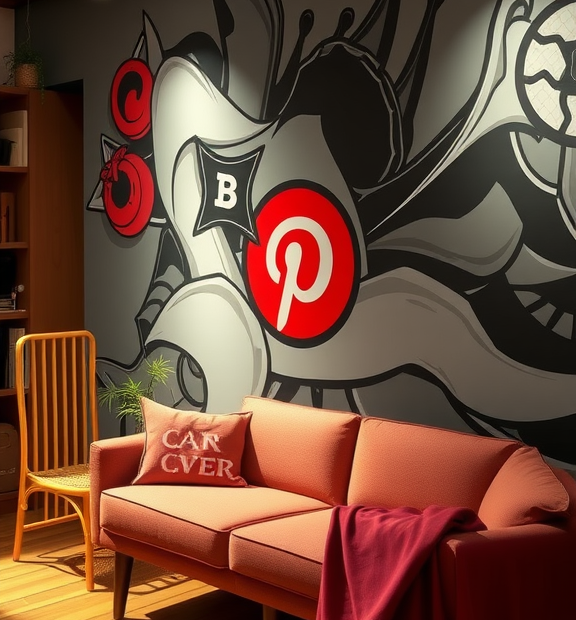Strategies to Stop Ads on Pinterest From Ruining Your Day
Scrolling through Pinterest can be a delightful experience, filled with creative ideas and inspiration. However, the onslaught of ads can sometimes be overwhelming, ruining what could have been a relaxing browsing session. Here are some effective strategies to help you minimize or even eliminate those pesky ads.
Evaluate Your Preferences
When you first set up your Pinterest account, you may have agreed to certain ad preferences without even realizing it. Now is a great time to revisit them:
- Go to Settings: Click on your profile icon, then the gear icon to access settings.
- Customize Ads: Under the “Privacy and Data” section, you can manage how ads are targeted to you. Customize what type of ads you want to see or opt out of personalized ads altogether.
Clear Your Browsing History
Another tactic to reduce ad clutter is to clear your browsing history on Pinterest:
- Clear Your Search History: Go to Settings, find the “Privacy and Data” section, and select “Clear Search History.” This can help reset your ad preferences.
- Browser History: Additionally, clearing your browser cache and cookies may help lessen the presence of recurring ads.
Engage With Less Content
Your engagement patterns on Pinterest influence the types of ads you see. Here’s how to adjust your interactions:
- Limit Your Pins: Pin less and focus on content that genuinely interests you. The less you’re exposed to certain topics, the fewer ads will follow.
- Unfollow Boards: If you’re following boards that consistently feature ads you dislike, consider unfollowing or muting them.
Switch to a Business Account
Converting to a Pinterest business account can give you more control over what you see. Business accounts access special features, including:
- Ad Settings: You can manage your ad preferences more thoroughly, making it easier to limit unwanted ads.
- Analytics Tools: Track your interests and see trends that could help you tailor your feed.
Utilize Ad Blocking Tools
If you’re still feeling overwhelmed by ads, consider using ad-blocking tools or browser extensions:
- AdBlock Plus: This popular extension can help filter out ads not just on Pinterest but across sites you visit.
- uBlock Origin: Known for its customization options, this tool lets you block ads according to your preferences.
Provide Feedback to Pinterest
Don’t hesitate to give Pinterest feedback on the ads you see. When ads aren’t relevant, letting Pinterest know can prompt a better user experience:
- Report Irrelevant Ads: Use the options provided with the ads themselves to report what you find unhelpful or annoying.
- Participate in Surveys: Occasionally, Pinterest will seek input through surveys that help them understand user preferences better.
Love what I do? Be a hero and help me keep creating awesome content!
Support My Mission Now!Every donation fuels more great stuff – thank you, legend!
By adjusting your settings, clearing your history, and engaging with content that aligns with your interests, you can significantly enhance your Pinterest experience. Additionally, making use of ad-blocking tools can offer a smoother, more enjoyable browsing session.
With these strategies, you can take control of your Pinterest feed, ensuring that the only ads you see are those that truly interest you. Remember, the goal is to create a more fulfilling and creative environment on Pinterest, one where inspiration reigns supreme and ads don’t get in the way.
Love what I do? Be a hero and help me keep creating awesome content!
Support My Mission Now!Every donation fuels more great stuff – thank you, legend!
Implement these solutions today, and reclaim your peaceful browsing experience. Happy pinning!
The Impact of Targeted Advertising on User Experience on Pinterest
Pinterest is a platform that thrives on creativity and inspiration, acting as a visual discovery engine for countless users worldwide. With millions of users sharing and saving ideas daily, this vast pool of content is an attractive playground for advertisers. However, the rise of targeted advertising on Pinterest has sparked discussions around its impact on user experience. Many users are left wondering, is it enhancing their exploration or ruining their experience?
The primary goal of targeted advertising is to deliver ads that are relevant to users based on their interests, behaviors, and demographics. For Pinterest, this means utilizing rich data gleaned from user interactions and activity. While some users appreciate the personalized touch, others find these ads intrusive and disruptive. Understanding the implications of targeted ads on Pinterest helps users navigate their feeds with greater ease.
Love what I do? Be a hero and help me keep creating awesome content!
Support My Mission Now!Every donation fuels more great stuff – thank you, legend!
Here are some essential factors to consider regarding the impact of targeted advertising on the user experience:
- Relevance: Targeted ads are designed to cater to your interests. If you often pin home decor, you might notice ads showcasing similar products. This feature can enhance the browsing experience, as you’re more likely to engage with content that resonates with your interests.
- Over-Saturation: The downside of targeted ads comes when users feel bombarded with promotional content. If every scroll reveals sponsored posts, it can lead to frustration and fatigue. Users may start to feel overwhelmed by the constant influx of ads, prompting them to check out less frequently.
- Distraction: When users turn to Pinterest for inspiration, encountering numerous ads can shift focus away from genuine content. This distraction can hinder creativity and lead to missed opportunities for discovery. It’s essential for Pinterest to find a balance between personalizing ads and maintaining a streamlined user experience.
- Ad Trust: Users are likely to have mixed feelings about the credibility of targeted ads. If ads align closely with personal tastes, they may be seen as helpful recommendations. However, if the ads appear irrelevant or constantly push products that don’t match a user’s style, trust can erode.
- Influence on Trends: Targeted ads can shape user behaviors and preferences. Brands leverage this power by introducing products that align with what users are already following. This synergy can create trends and styles that might not have emerged organically, potentially clouding genuine inspiration.
One way to combat the potentially negative experience is by adjusting your Pinterest settings. Users can personalize their ad preferences through the platform, enhancing their browsing experience by excluding certain types of ads or managing what interests they want to be targeted with. This customization gives users control over the types of ads they encounter, which can significantly improve their overall interaction with the platform.
Love what I do? Be a hero and help me keep creating awesome content!
Support My Mission Now!Every donation fuels more great stuff – thank you, legend!
Another strategy is for users to diversify the types of content they engage with. By seeking out a broad range of pins, you can help algorithmic systems present a diverse set of ads. This variety may reduce the experience of ad fatigue and promote a sense of surprise and discovery instead of monotony.
Additionally, understanding that advertising is a key part of Pinterest’s ecosystem might help users change their perspective. As a free platform, Pinterest relies on advertising revenue. Recognizing that these ads contribute to keeping the platform operational can foster a more understanding attitude. A balance between engaging with ads and discovering authentic content can lead to a more harmonious use of the platform.
Engaging with Pinterest communities can provide insight and strategies from fellow users. Sharing experiences and recommendations can help navigate the complexities of targeted advertising. This way, rather than letting ads ruin your day, you can equip yourself with knowledge and tools to tailor your experience more favorably.
While targeted advertising on Pinterest has both pros and cons, understanding its implications can lead to a better experience overall. With the right approaches, users can enhance their engagement with inspirational content without letting ads overshadow their creativity. Balancing interaction with ads while focusing on authentic discovery can create a more enjoyable environment on the platform.
Conclusion
Navigating the world of Pinterest shouldn’t feel overwhelming, especially when ads interfere with your experience. By employing effective strategies, you can reclaim your time and enjoy the creative content you came for. One way to achieve this is by adjusting your ad preferences. Take a moment to explore the settings on your account where you can limit the type of ads you see—this personalization can drastically improve your browsing experience.
Understanding the impact of targeted advertising is also crucial. These ads are designed to capture your attention, but they often stray from your interests or intentions. By familiarizing yourself with how Pinterest’s advertising algorithms work, you can better navigate the platform and be less affected by irrelevant ads. Remember that Pinterest is meant to inspire creativity, not to feel like an endless stream of commercials.
Implementing these strategies isn’t just about minimizing distractions; it’s about enhancing your overall experience. When you actively manage your interactions with Pinterest, you create a space that resonates more with your interests and hobbies. Enjoy the platform as it is meant to be—an endless source of inspiration and ideas. With the right adjustments, you can stop ads from ruining your day, allowing you to focus on what truly matters: discovering and sharing beautiful content that ignites your imagination.

